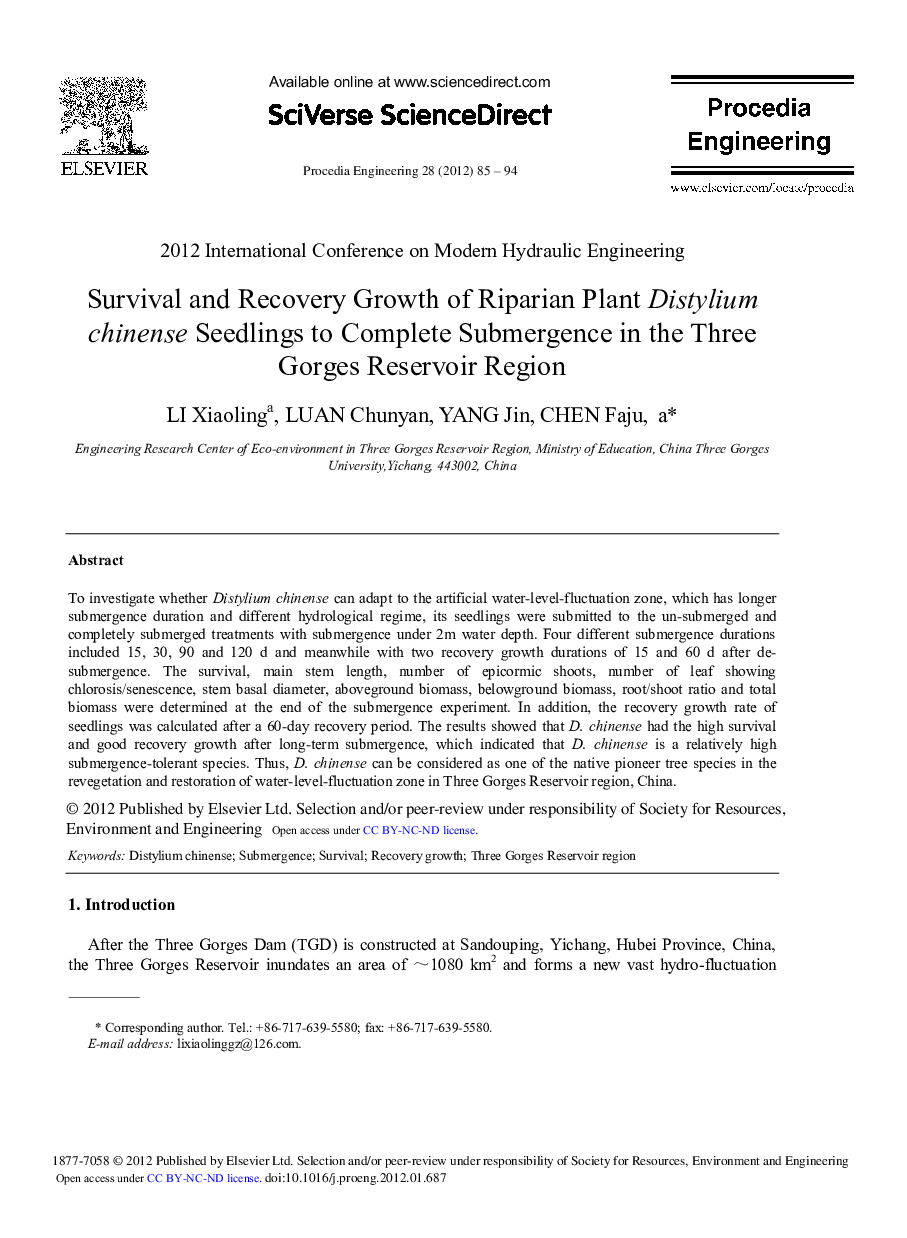| Article ID | Journal | Published Year | Pages | File Type |
|---|---|---|---|---|
| 861868 | Procedia Engineering | 2012 | 10 Pages |
To investigate whether Distylium chinense can adapt to the artificial water-level-fluctuation zone, which has longer submergence duration and different hydrological regime, its seedlings were submitted to the un-submerged and completely submerged treatments with submergence under 2m water depth. Four different submergence durations included 15, 30, 90 and 120 d and meanwhile with two recovery growth durations of 15 and 60 d after de-submergence. The survival, main stem length, number of epicormic shoots, number of leaf showing chlorosis/senescence, stem basal diameter, aboveground biomass, belowground biomass, root/shoot ratio and total biomass were determined at the end of the submergence experiment. In addition, the recovery growth rate of seedlings was calculated after a 60-day recovery period. The results showed that D. chinense had the high survival and good recovery growth after long-term submergence, which indicated that D. chinense is a relatively high submergence-tolerant species. Thus, D. chinense can be considered as one of the native pioneer tree species in the revegetation and restoration of water-level-fluctuation zone in Three Gorges Reservoir region, China.
